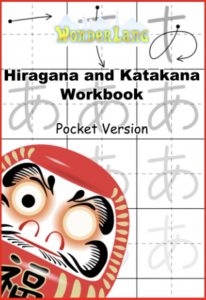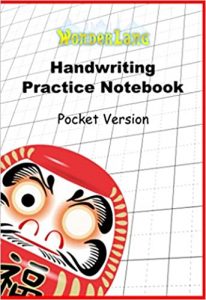Hi!
This article will introduce one of the primary use of the particles は and が: introducing a topic into a conversation or text, and telling facts about this topic.
Reference: The particles は and が
| Amazon.com |  |
Amazon.ca |
Once upon a time…
One of the most basic usage of は and が can be found in fairy tales. Every Japanese fairy tale you will encounter will begin in the same manner as the one below (taken from Saru Kani Gassen):
むかし むかし、カニさん と サルさん が すんで いました。
[mukashi mukashi, KANI-san to SARU-san ga sunde imashita.]
ある ひ、サルさん は かき の たね を ひろいました。
[aru hi SARU-san wa kaki no tane o hiroimashita.]
In the first sentence, the particle が – which function as we read in the article about は and が is to give focus – is used to shed light on the existence, a long time ago, of two specific characters: Mr Crab and Mr Monkey, and makes them the current topic of the story.
Since now you have knowledge about the existence of these two specific characters, the story can go on by stating facts about them such as in this case the fact that Mr Monkey, the topic of the sentence since it is followed by は, found a kaki seed. There can be no misunderstanding as to which Mr Monkey we are speaking about, its is the one that lived a long time ago in that specific place stated by the first sentence.
As I indicated in the article about は and が, it is common to drop the topic part in casual situations when there is no risk of confusion regarding this topic. But in certain case’s such as the one above where both Mr Crab and Mr Monkey were introduced, it is necessary to indicate the topic to ensure proper understanding of the sentence. If the author had only written “ある ひ、かき の たね を ひろいました。” then the sentence could have been interpreted either as Mr Crab did find it, or Mr Monkey did, or even the both of them.
| Amazon.com Amazon.co.uk Amazon.de Amazon.fr Amazon.es Amazon.it Amazon.co.jp |
 |
Amazon.com.br Amazon.ca Amazon.in Amazon.com.au Amazon.com.mx Amazon.nl |
Telling about common knowledge
There is yet one situation where the principle of introducing a topic with が is not necessary, and this is when telling about facts that are common knowledge.
“Common knowledge?! What is that?” you may ask.
An obscure expression for something quite simple: Common knowledge represents things or facts that are known by everyone, cannot be misinterpreted and is “always” true. For instance, if I say “The Sun is shining.” or “The sky is blue.”, I know for sure that I don’t have to tell you of which Sun or sky I am spoking of because everyone knows what they are since they are kids.
Therefore to speak about these elements you will always use は:
こおり は さむい。
[koori wa samui.]
さかな は およぐ。
[sakana wa oyogu.]
Summary
Use が to introduce a new topic if the topic is not common knowledge.
Use は to tell facts about a topic that has been introduced with が or that is common knowledge.
Exercices
Replace … with either は or が:
むかし むかし、ある ところ に、おじいさん と おばあさん … すんで いました。
[mukashi mukashi, aru tokoro ni, ojiisan to obaasan … sunde imashita.]
が – When introducing a topic that is not common knowledge you should use が.
おじいさん … やま へ しばかり に、おばあさん … かわ へ せんたく に いきました。
[ojiisan … yama e shibakari ni, obaasan … kawa e sentaku ni ikimashita.]
は – The author is stating facts about the old man (topic) which was previously introduced.
は – The author is stating facts about the old woman (topic) which was previously introduced.
ちきゅう … まるい です。
[chikyuu … marui desu..]
は – Here we are speaking about the Earth which is common knowledge.
Further reading:
Describing (coming soon)
Here it is for today!
Bye!
Stéphane
Follow us:
Спасибо за информацию.
You’re welcome 🙂